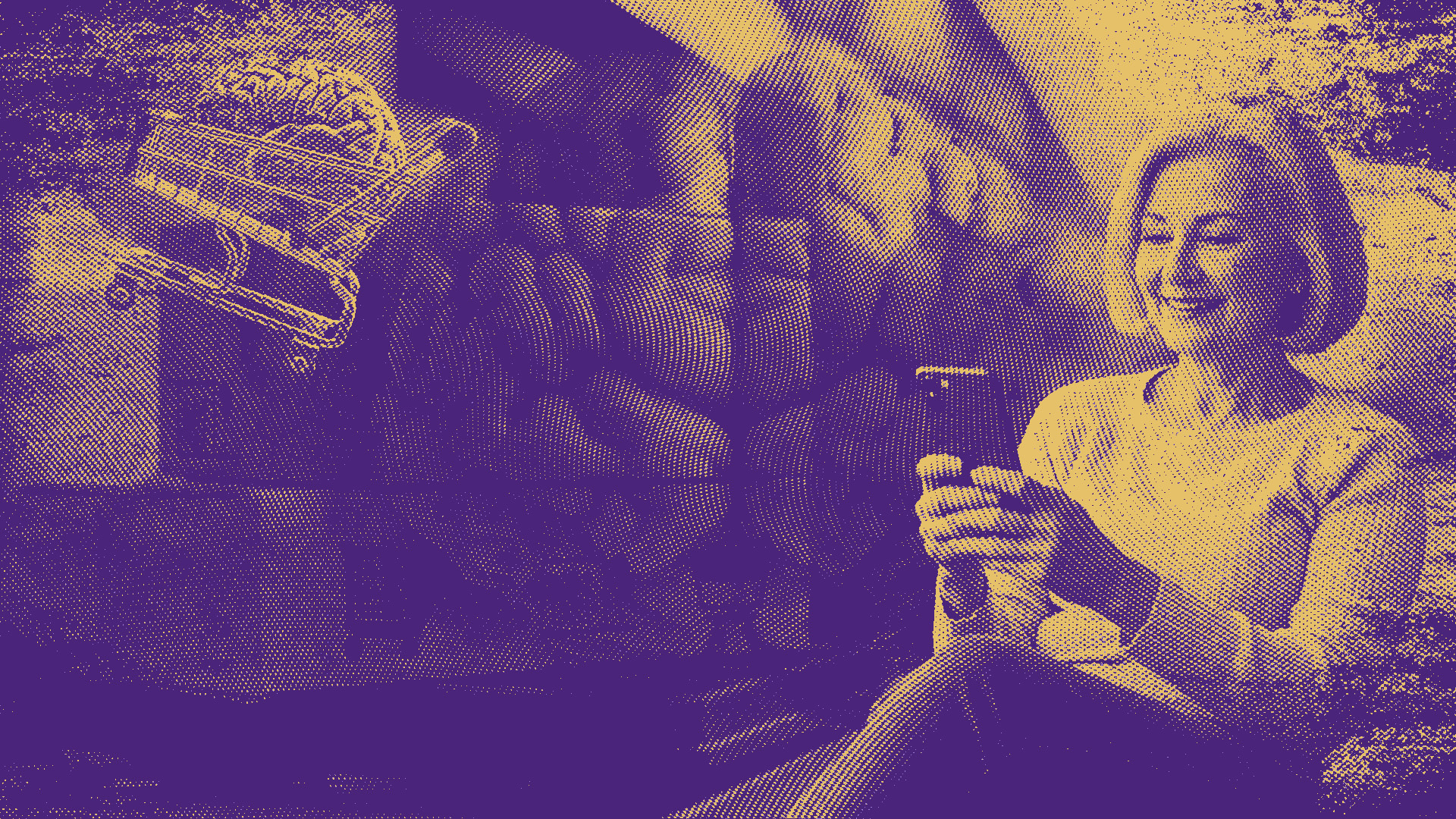Table of contents
Overview of neuromarketing in e-commerce
Neuromarketing has transformed e-commerce by revealing how subconscious emotions drive purchasing decisions. Traditional online shopping relies on static images and descriptions, leaving room for uncertainty. AR (augmented reality) and VR (virtual reality) now bridge this gap, offering immersive experiences that replicate in-store interactions. This shift allows brands to tap into consumer psychology, enhancing trust and engagement before the final purchase.
Retailers integrating AR/VR create highly personalised experiences that trigger emotional responses. Interactive 3D models, virtual try-ons, and simulated environments reduce cognitive effort, making decisions feel intuitive rather than analytical. This emotional ease fosters impulse buying and brand loyalty, setting the stage for the next evolution of e-commerce.
The role of AR/VR in consumer decision-making
Decision-making in e-commerce is often hindered by the inability to touch or try products. AR/VR technology removes this barrier by providing sensory-rich interactions that activate emotional and cognitive engagement. When users visualise a product in their space or experience a virtual showroom, the sense of ownership intensifies, significantly increasing purchase likelihood.
These technologies also enhance brand storytelling. VR-driven experiences transport users into a brand’s world, embedding them emotionally in the narrative. AR, meanwhile, simplifies comparisons and reassures customers about their choices. Both strategies influence subconscious preferences, subtly guiding consumers toward confident and emotionally satisfying purchases.
How emotions drive buying behaviour
Emotions dictate most purchasing decisions, often overriding logic. The limbic system, the brain’s emotional centre, reacts to sensory stimuli faster than rational thought. When shopping online, an engaging visual or interactive element can evoke excitement, nostalgia, or trust—prompting immediate action. AR/VR heightens this effect by immersing users in lifelike scenarios where emotional connections form naturally.
E-commerce brands leveraging AR/VR create an experiential journey rather than a transactional one. When a shopper sees a virtual version of themselves wearing a product or walks through a digital showroom, the emotional bond strengthens. This activation of positive emotions increases perceived value, making purchases feel more rewarding and impulsive.
The neuroscience behind impulse and emotional buying
Impulse buying is largely a result of dopamine release—our brain’s way of reinforcing pleasure-seeking behaviour. AR/VR triggers this response by simulating real-world interactions, making products feel tangible and instantly gratifying. This neurological shortcut reduces hesitation, nudging consumers towards spontaneous purchases.
Beyond dopamine, mirror neurons play a role in immersive shopping experiences. Observing a virtual avatar interacting with a product can create a subconscious sense of personal use, driving emotional engagement. When a user experiences joy or confidence in a virtual environment, the brain associates those feelings with the product, making them more likely to buy without second-guessing.
Augmented reality (AR) and the shopping experience
Uncertainty is a major friction point in e-commerce. Customers hesitate when they can’t physically examine a product, leading to abandoned carts. AR eliminates this doubt by allowing users to visualise products in their real-world environment. Whether placing furniture in a living room or trying on glasses through a smartphone camera, AR bridges the sensory gap and provides instant reassurance.
This enhanced interaction boosts confidence in purchasing decisions. Seeing a product in context fosters a sense of ownership before the transaction is completed. When customers feel certain about how an item fits their lifestyle, the likelihood of returns decreases, and brand satisfaction rises. AR doesn’t just sell products; it sells certainty.
Case studies: AR applications increasing purchase intent
IKEA’s AR-powered app, IKEA Place, revolutionised furniture shopping by letting users preview items in their homes before purchasing. This feature significantly reduced buyer hesitation and increased conversion rates. Similarly, Sephora’s Virtual Artist app enabled customers to try on makeup shades through AR, increasing engagement and driving sales by eliminating guesswork.
Another strong example is Nike’s AR shoe-sizing tool, which scans a customer’s foot and recommends the perfect fit. This innovation tackled a common e-commerce pain point—incorrect sizing—resulting in fewer returns and higher customer satisfaction. Brands that integrate AR create seamless, interactive shopping experiences that make purchasing an instinctive decision rather than a calculated risk.
Creating immersive brand experiences that influence emotions

VR transports consumers into branded environments where they can interact with products in a hyper-realistic setting. Unlike traditional e-commerce, where engagement is limited to scrolling and clicking, VR provides full sensory immersion. Users can step into a virtual store, explore a collection, and experience the atmosphere of a brand—all from their home.
These immersive experiences trigger emotional responses by simulating real-world interactions. A luxury fashion brand, for instance, can recreate the ambience of a high-end boutique, evoking exclusivity and desirability. Car companies offer VR test drives, allowing users to feel the thrill of a new vehicle without leaving their house. This deep emotional connection makes brands more memorable and purchasing decisions more intuitive.
How VR enhances perceived product value and trust
Perceived value is a psychological construct that determines how much consumers are willing to pay. VR elevates this perception by making products feel more premium through interactive storytelling. A 360-degree showcase of craftsmanship or a behind-the-scenes production tour creates transparency, reinforcing quality and trust.
Trust also grows when consumers feel in control of their shopping journey. VR eliminates uncertainty by offering a lifelike preview of products, reducing the fear of disappointment. This trust-building effect is especially powerful for high-ticket items, where buyers need strong emotional assurance before committing. In the digital landscape, VR shifts the experience from passive browsing to active engagement, leading to stronger brand loyalty and higher conversions.
Neuropricing strategies in AR/VR commerce
Pricing perception is not purely rational—it is deeply influenced by emotions and subconscious cues. AR and VR environments provide brands with an opportunity to implement neuropricing strategies that subtly alter how consumers perceive cost. Dynamic pricing models, where prices adjust based on demand or user behaviour, become more persuasive when embedded in immersive experiences. Consumers are more likely to accept higher prices when products are presented in engaging, emotionally stimulating ways.
Sensory triggers also play a role in price perception. When a product is showcased in a rich VR environment with high-end aesthetics, the brain associates it with luxury, making premium pricing feel justified. Similarly, AR tools that allow customers to “customise” products create a psychological investment, increasing their willingness to pay more. These strategies leverage the brain’s bias toward emotional and experiential value over purely numerical cost.
Psychological pricing models in immersive retail environments
The way a price is presented significantly influences purchasing decisions. In an AR/VR shopping space, brands can employ psychological pricing techniques that take advantage of immersive engagement. Charm pricing (e.g., £9.99 instead of £10) remains effective, but the greater opportunity lies in bundling and experiential anchoring—where consumers perceive added value due to how a product is introduced.
VR, for instance, allows brands to create a high-sensory environment where premium pricing feels justified. A VR-based travel agency can showcase exotic destinations in hyper-realistic 360-degree experiences, making an expensive holiday package feel like an irresistible opportunity rather than a high-cost decision. AR-driven price comparisons can also use colour, animation, or limited-time offers to create urgency, making consumers more likely to purchase immediately.
Emotional branding through AR/VR experiences
Brand loyalty is not just about product quality; it is about emotional resonance. AR and VR provide immersive storytelling opportunities that allow brands to embed themselves in a consumer’s memory. Instead of a static advertisement, a customer can walk through a virtual world that embodies a brand’s values, creating a deeper emotional bond than traditional marketing ever could.
This emotional connection is especially powerful in industries where experience defines value. A sustainable fashion brand, for example, can use VR to transport customers to an ethical factory, showcasing artisans at work. Similarly, a travel brand can provide a VR preview of a destination, building excitement and desire before a booking. The brain retains emotionally rich experiences far better than generic marketing messages, making AR/VR branding a game-changer.
Real-world examples of brands successfully leveraging AR/VR for branding
Luxury brands have embraced VR to enhance their storytelling. Dior offers VR experiences that take users behind the scenes of its couture shows, reinforcing exclusivity and craftsmanship. Similarly, Audi’s VR showroom allows potential buyers to experience the sensation of driving a car before setting foot in a dealership. These strategies elevate brand perception and influence emotional purchasing.
Nike’s AR-powered sneaker launch engaged customers by allowing them to unlock limited-edition shoes through location-based experiences. This fusion of exclusivity and digital interaction heightened emotional investment, driving sales and strengthening brand affinity. Brands using AR/VR are not just selling products—they are crafting compelling narratives that make customers feel part of something bigger, ensuring long-term loyalty.
The future of AR/VR in e-commerce and neuromarketing
AR and VR are evolving beyond novelty into fundamental pillars of e-commerce. Advancements in AI-driven personalisation are creating hyper-customised shopping experiences, where virtual stores adapt in real time based on a user’s behaviour, preferences, and emotions. Interactive AI avatars now assist shoppers in virtual spaces, providing tailored recommendations that mimic in-store consultations, strengthening emotional engagement.
Social shopping in AR/VR is also gaining traction. Brands are integrating virtual spaces where users can shop together, interact with digital assistants, or even watch live product demonstrations in a simulated environment. As these experiences become more social and gamified, consumer engagement deepens, increasing the likelihood of spontaneous purchases driven by emotional connection and peer influence.
The next frontier: AI-driven emotional marketing with AR/VR
The intersection of AI, AR, and VR is unlocking new possibilities in neuromarketing. AI algorithms can now track emotional responses in real time, adjusting virtual experiences accordingly to optimise consumer engagement. If a user exhibits excitement or curiosity while exploring a virtual store, the environment can dynamically shift to enhance those emotions—perhaps by highlighting premium options or triggering limited-time offers.
Facial recognition and biometric feedback could further refine emotional branding. In the near future, VR shopping environments may adjust music, lighting, and product placement based on a user’s subconscious reactions, creating a deeply personalised journey that maximises pleasure and reduces hesitation. As these technologies mature, brands will move from influencing consumer behaviour to actively shaping emotional states, making e-commerce more intuitive and irresistible than ever before.
Key takeaways on leveraging AR/VR for emotional purchases
AR and VR are transforming e-commerce by engaging consumers on a deeper emotional level. These technologies eliminate uncertainty, enhance sensory experiences, and create immersive environments that trigger impulse purchases. Neuromarketing principles applied in AR/VR commerce tap into subconscious decision-making, making products feel more desirable and valuable. As a result, brands can drive higher conversions while fostering lasting customer loyalty.
Emotional branding and neuropricing strategies further amplify the effectiveness of AR/VR commerce. From dynamic price anchoring to personalised virtual experiences, the ability to shape consumer perception is more powerful than ever. The brands that embrace this shift will not only see immediate sales growth but will also build deeper, more emotionally connected relationships with their audience.
FAQs
How does AR/VR influence consumer emotions in e-commerce?
AR/VR engages multiple senses, creating immersive experiences that trigger emotions like excitement, trust, and desire. These emotions drive faster purchasing decisions and strengthen brand connections.
What are neuropricing strategies, and how do they work in AR/VR commerce?
Neuropricing strategies use psychological triggers, such as dynamic pricing and immersive storytelling, to shape how consumers perceive value. In AR/VR environments, pricing can be adjusted based on demand, exclusivity, or emotional engagement.
How does AR reduce cart abandonment in e-commerce?
By allowing customers to visualise products in their real-world environment, AR reduces uncertainty, increases confidence, and minimises the hesitation that often leads to cart abandonment.
Why is emotional branding important in AR/VR shopping experiences?
Emotional branding builds deep consumer connections by creating memorable, immersive interactions. When consumers experience a brand through VR storytelling or AR engagement, they develop stronger loyalty and higher purchase intent.
What is the future of AR/VR in e-commerce?
AI-driven personalisation, social VR shopping, and biometric emotional tracking will refine AR/VR experiences, making e-commerce more intuitive, engaging, and emotionally persuasive.







